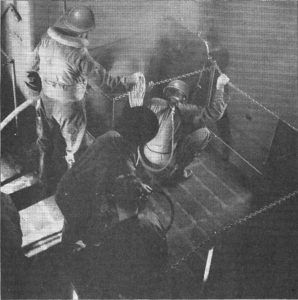This article examines blackout and dead ship conditions onboard vessels, referencing the latest consolidated version of the International Maritime Organization’s (IMO) SOLAS Convention. It aims to provide a structured guide for marine engineers and maritime professionals regarding the operational conditions of a ship, the roles of power sources during these conditions, and the relevant SOLAS regulations.
1. Normal Operational and Habitable Conditions (SOLAS Chapter II-1 Reg. 3.5):
Under normal operational and habitable conditions, a ship’s primary power sources include both the main generators and auxiliary diesel generators, which are connected to the main switchboard. These systems ensure the continuous functioning of essential machinery, navigation aids, communication systems, and habitability features. The main switchboard is responsible for distributing power throughout the vessel, facilitating all operational needs effectively.
2. Emergency Conditions: Initial Stage (SOLAS Chapter II-1 Reg. 3.6):
Emergency conditions arise when there is a loss of energy from the main switchboard, resulting in a blackout. In such cases, the independent emergency source of power becomes critical. This includes the emergency diesel generator and its associated emergency switchboard (ESB). Temporary power sources such as batteries, uninterruptible power supplies (UPS), hydraulic accumulators, and air bottles provide immediate backup power for essential systems for a minimum duration of 30 seconds.During this initial emergency phase, the standby auxiliary diesel generator is activated and connected to the main switchboard to restore normal operations. Concurrently, the emergency diesel generator starts up and connects to the ESB, with the aim of resolving the blackout within 45 seconds as mandated by SOLAS regulations.
3. Emergency Conditions: (Prolonged) Blackout (e.g., the Blackout Condition After a Fire):
A prolonged blackout may occur due to severe incidents such as a fire, leading to a condition where all electrical energy is lost. In this scenario, the emergency source of power becomes the sole available means of restoring functionality. To facilitate the restoration of power to the main switchboard, auxiliary systems necessary for starting the auxiliary diesel generator must be powered from the ESB. These auxiliary systems typically include air compressors, feeder and booster fuel oil pumps, lubrication oil pumps, and UPS units.

4. Emergency Conditions: Dead Ship Condition (SOLAS Chapter II-1 Reg. 26.4):
A ‘dead ship’ condition is defined as a state where there is no available source of energy affecting all propulsion and auxiliary systems on board. According to SOLAS Chapter II-1 Regulation 26, it is required that energy be restored within 30 minutes during such an emergency condition. This restoration process involves utilizing the ESB to energize essential auxiliary systems that are critical for starting the auxiliary diesel generator and ultimately restoring power to the main switchboard.Understanding these operational conditions and their resolutions is crucial for maritime professionals as mandated by SOLAS regulations. This knowledge significantly contributes to ensuring safe and efficient ship operations during emergencies, ultimately safeguarding lives, property, and the marine environment.
Conclusion
In summary, maritime professionals must be well-versed in blackout and dead ship conditions as outlined in SOLAS regulations. By comprehensively understanding these scenarios and adhering to established safety protocols, they can enhance preparedness for emergencies at sea, ensuring that vessels remain operational even in challenging situations. This knowledge not only protects crew members but also upholds compliance with international maritime safety standards as set forth by organizations like IMO.


Wonderful, thank you !